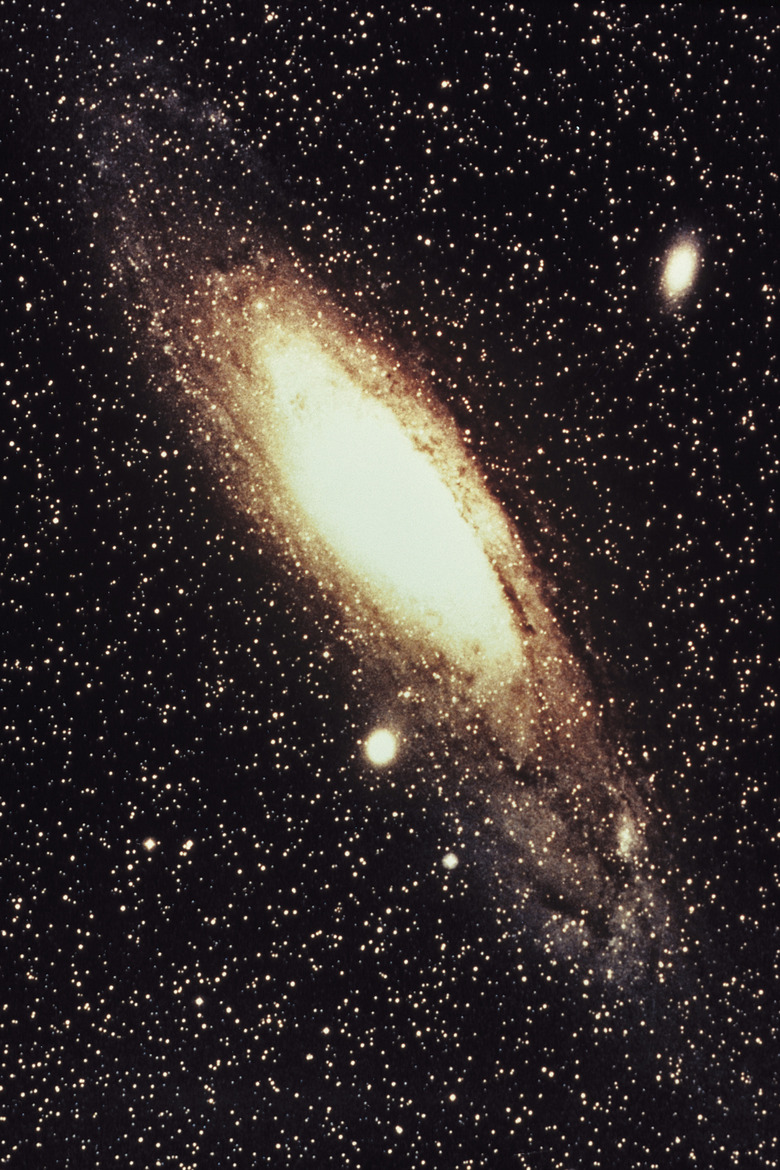What Do Astronomers Use To Study Quasars?
Discovered over 50 years ago, quasi-stellar radio sources, or quasars, are the most radiant objects that exist. Billions of times brighter than the sun, they produce more energy every second than over a thousand galaxies. In addition to producing visible light, Quasars emit more X-rays than any known source. Astronomers use a variety of high-tech tools to study these enigmatic objects that lie near the edge of the universe.
Why Quasars Exist
Why Quasars Exist
Scientists believe that supermassive black holes and reside at the centers of most galaxies. The centers of some galaxies may also contain quasars. Because of its extreme mass, a black hole exerts a powerful gravitational pull on objects around it. When a supermassive black hole draws in large amounts of gas quickly, the surrounding quasar emits a tremendous amount of energy.
Visible From Across the Universe
Visible From Across the Universe
What Scientists Study Gas swirling into a black hole not only heats up to millions of degrees, but jets of radio and X-rays radiate outwards traveling at almost the speed of light. Quasars are remarkably compact to produce so much energy. About a million times smaller than their host galaxies, quasars produce so much energy that astronomers can study some of them from 12 billion light years away.
Spotting a Quasar
Spotting a Quasar
Until the Hubble began observing the heavens, scientists thought that quasars were simply powerful star-like objects. This telescope has such high resolution that it can see the effect that a distant black hole has on surrounding objects. Astronomers, for example, can user the Hubble to observe the jets of electrons that quasars emit light years away.
Other Observational Methods
Other Observational Methods
While the orbiting Hubble continues to delight scientists with new celestial discoveries, ground-based radio telescopes help detect quasars too. Unlike optical telescopes that rely on visible light, radio telescopes detect radio waves. In 1935, Karl Jansky of Bell Labs discovered that stars and other objects in space emitted radio waves. If you examine an image from a radio telescope, you'll see that quasars appear bright.
Several Views: One Object
Several Views: One Object
Other types of exotic heavenly bodies, such as active galaxies and radio galaxies, emit large amounts of energy as well. Most astronomers think that these objects may be the same thing. When the beam from one of them shoots directly towards the Earth, you may see it as a quasar. If the beam has a different orientation, it might appear as a less powerful active galaxy or radio galaxy.
References
Cite This Article
MLA
Lee, Kevin. "What Do Astronomers Use To Study Quasars?" sciencing.com, https://www.sciencing.com/astronomers-use-study-quasars-17502/. 24 April 2017.
APA
Lee, Kevin. (2017, April 24). What Do Astronomers Use To Study Quasars?. sciencing.com. Retrieved from https://www.sciencing.com/astronomers-use-study-quasars-17502/
Chicago
Lee, Kevin. What Do Astronomers Use To Study Quasars? last modified August 30, 2022. https://www.sciencing.com/astronomers-use-study-quasars-17502/
